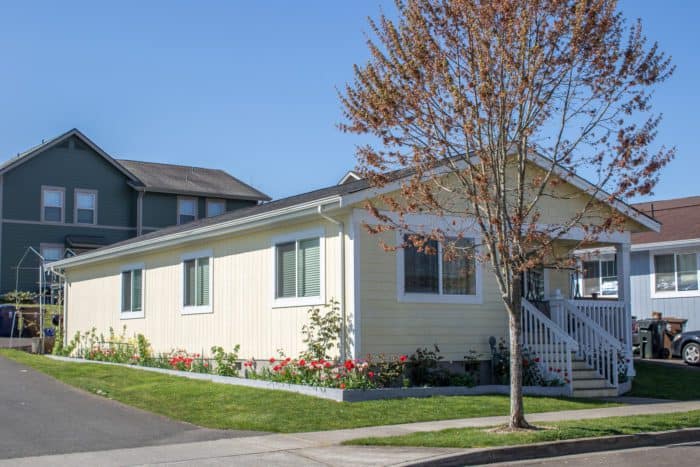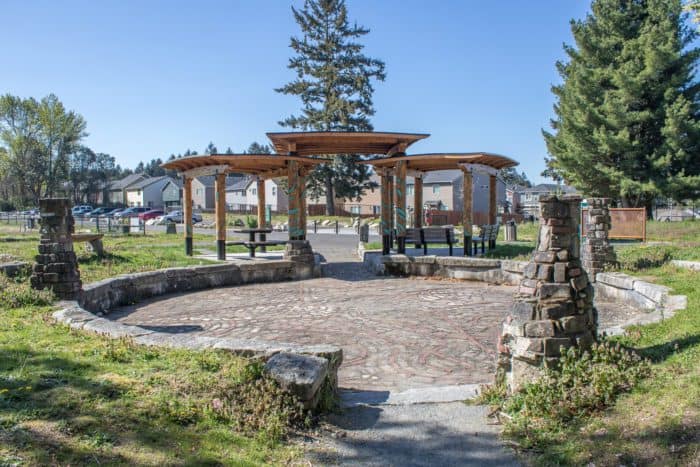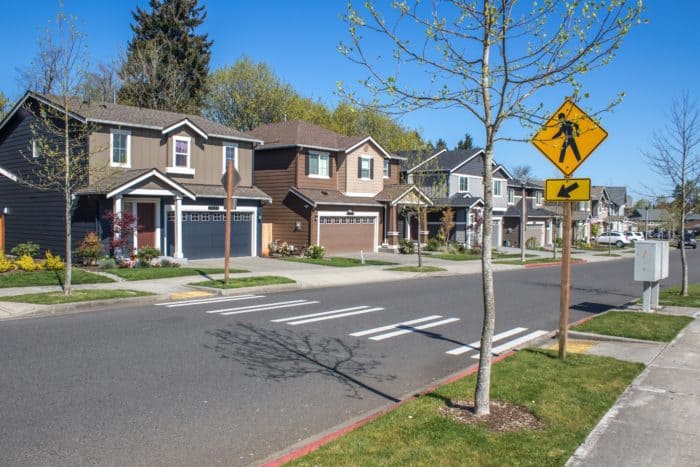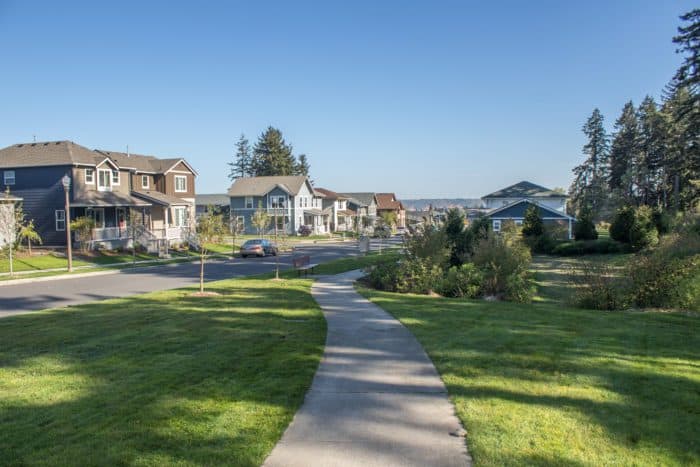History of Salishan
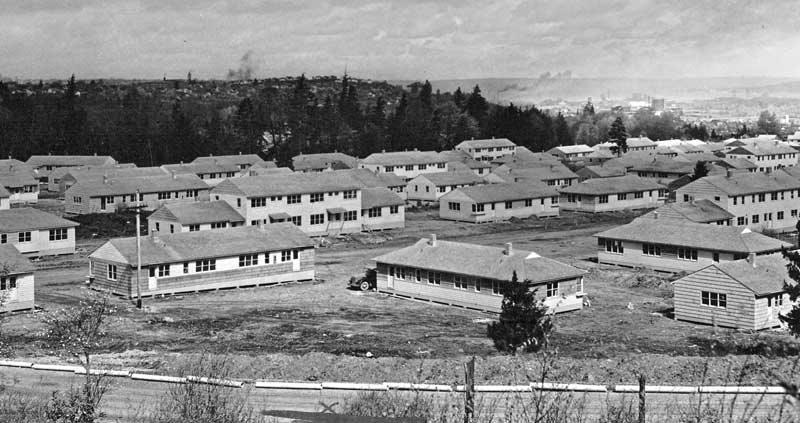
The origin of Salishan is closely linked with the attack on Pearl Harbor. When that particular war began for the United States, the federal government quickly realized two things. First, a lot of people and their families were headed for the Northwest. They were coming to work in the factories and shipyards that built the planes and ships that won that war. Second, when they arrived they would greatly worsen a shortage of affordable housing.
In response, the federal government planned and built Salishan to provide temporary housing for war workers. It also built other communities throughout the Northwest, including Rainier Vista, Holly Park and High Point in Seattle, Park Lake Homes in White Center, West Park in Bremerton, Columbia Villa in Portland, Oregon, and elsewhere in Tacoma, Lincoln Heights and American Lake Gardens.
The federal government built these communities at the same time for the same reason: as an emergency measure of wartime. This is why they looked somewhat alike. It also built them quickly. In ways that later became important, the housing was probably not built to last as long as it did.

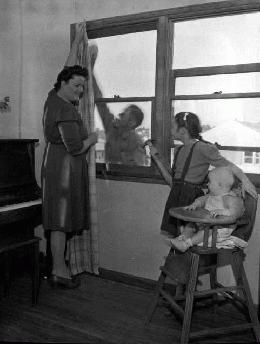
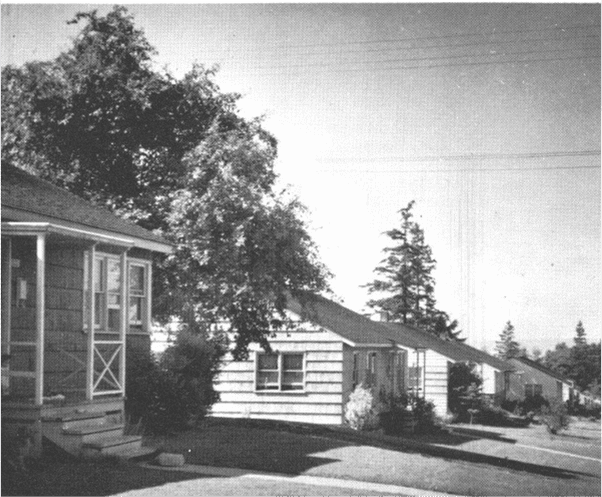
Salishan’s construction began in 1942. It was initially built to have 2,000 housing units on several hundred acres in East Tacoma between South 38th Street and South 54th Street along the east side of Portland Avenue.
The design was notable, if not for its housing, then for its landscaping and layout. The location is attractive. Several hundred acres of what has become Swan Creek Regional Park wraps Salishan to the east and south. First Creek Ravine running through Salishan is an attractive green belt. The sloping landscape offers views of Commencement Bay and the shipyards where many residents worked during the war.
Families started moving in on May 1, 1943 and during the war, Salishan served its purpose. The Tacoma Housing Authority (THA) managed Salishan for the federal government until the war’s end and afterward.
Salishan was one of the area’s first residential neighborhoods that was racially integrated on purpose. Diversity by race, language, ethnicity, national origin, and age has remained a signature and appealing aspect of Salishan to the present day, including the redevelopment of New Salishan.
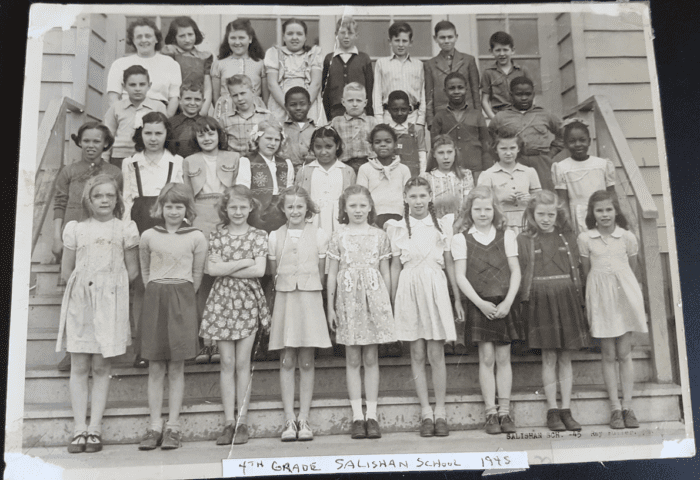
After the war, the federal government gave most of Salishan, with about 880 apartments on 188 acres, to THA to own and manage as a public housing community. The federal government gave fifty acres, cleared of housing, to MetroParks for recreational uses. The MetroParks portion is the southeast acreage of original Salishan.
From the end of the War until now, Salishan has been an important part of the City’s stock of affordable housing. It has offered affordable and stable housing to generations of City residents. In addition, especially since the end of the Vietnam War and the fall of Saigon, it has been a gateway community offering new American families their first American home.
In 2000, on the eve of Salishan’s demolition and reconstruction, the ethnic background of Salishan’s residents was about 25% Vietnamese, 25% Cambodian, 15% Russian, 13% African-American, with the balance comprised of European, Latin American, Korean, and other backgrounds.
Salishan also struggled with more than its share of crime. Its reputation, particularly in the 1980s and 1990s, became quite unsavory. In response, THA, the City of Tacoma, and most the residents took effective action. By the late 1990s Salishan’s crime rate had fallen to what other city neighborhoods were experiencing.
By the time THA starting demolishing it in 2001, Salishan was a successful and safe neighborhood that was well organized, tightly knit, and occupied by people who were very fond of it.
Yet, by the end of the 1990s, Salishan was also worn out. After 60 years, the housing was in poor condition, for two main reasons. It probably was not built to last so long. In addition, Salishan was showing what happens when the nation does not invest adequately in the capital needs of the nation’s public housing portfolio.
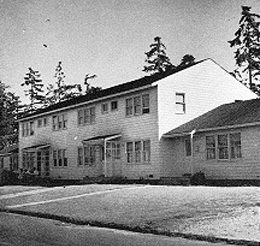

The housing became like an old car; it ran well enough but it was no longer worth the repairs it required. It was also unsightly. In addition, Salishan’s urban infrastructure was worn out. Its electrical distribution system needed a complete replacement. It needed a new water distribution system. Its sewer system and its systems to manage stormwater were ailing. Its roads, curbs and lights were not looking that well either.
For these reasons, THA and its many partners undertook to tear down Salishan and tear up its infrastructure and build anew. Starting in 2001, THA started a demolition and reconstruction project in a $225 million effort that would be the largest residential development in the history of the City, except perhaps for Salishan’s initial construction.
New Salishan is a mixed-income, mixed-use neighborhood of affordable and market-rate rental units, single-family homes for sale, commercial buildings, and parks, all on new infrastructure. This remarkable and remarkably ambitious project was completed in 2011.
